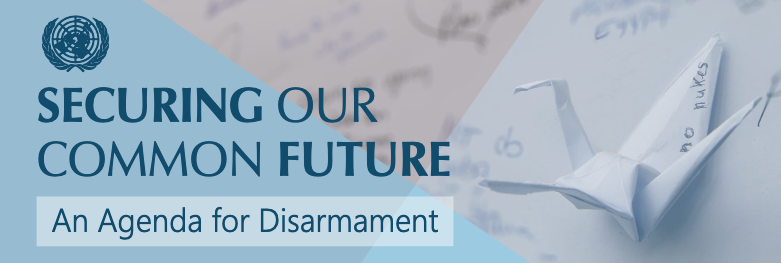UNODA Short Course The UN SaferGuard Programme and the International Ammunition Technical Guidelines (IATG)
Overview
Ammunition is a key part of any discussion on small arms control, yet very little is known about global ammunition flows. Unsecured or poorly managed ammunition stockpiles pose significant safety and security challenges: their illicit diversion sustain conflict and armed criminal activity, and unplanned explosions present a danger to civilian populations causing casualties, environmental and infrastructural damage, and forced displacement among others. In addition, diverted ammunition is increasingly used to assemble improvised explosive devices by non-State actors.
These risks have caused considerable concern for the international community and efforts have been made to establish measures for safe and secure management of ammunition. In 2010, the United Nations Security Council recommended that stockpile security, accountability and the management of arms and ammunition be promoted “as an urgent priority” (resolution 1952 (2010)). The General Assembly, in resolution 63/61 (2009), requested the United Nations to develop guidelines for adequate ammunition management. In response, the International Ammunition Technical Guidelines (IATG) were developed in 2011 and the UN SaferGuard Programme was established as the corresponding knowledge management platform to oversee the maintenance, updating and dissemination of the IATG. The IATG offer practical guidance for a ‘through-life’ approach to ammunition management and aim at assisting relevant stakeholders – including national authorities, as well as industry, private security companies and operational non-governmental organisations – to enhance the safety and security of ammunition stockpiles.
This short course provides an introduction to the issue of poorly managed ammunition stockpiles, outlining what threats they pose to safety and security, and presenting the key UN instrument developed to address these challenges. The course discusses how the application of the IATG is key in effective ammunition safety management and what role the UN SaferGuard Programme plays in this matter. The complementary resources and assistance mechanisms available for relevant stakeholders in the effective implementation of the IATG will also be described.
Objectives
Upon completion of this course, you will be able to:
- Justify the significance of disarmament and non-proliferation
- Describe the role the United Nations and the UN Office for Disarmament Affairs (UNODA) play in addressing disarmament issues
- Understand why safe and secure ammunition management is essential
- Analyse the goals and the content of the International Ammunition Technical Guidelines, and the role of the UN SaferGuard Programme
- Describe complementary resources and assistance mechanisms which enhance the effective application of the Guidelines by relevant stakeholders
|
| Audience: The course is open to all interested audiences. |
|
| Components and Methodology: Each module takes approximately 20 minutes and can be completed at the learner’s own pace The course consists of two thematic modules:
The course is available in English and is held in the Disarmament Education Dashboard, thus participants need a computer or mobile device, with audio and reliable internet connection. No special software is required. |
|
| Certificate: Upon successful completion of thematic modules, including examination and course evaluation a certificate of completion will automatically be issued to the participant. |
Short-course Series
The UN Office for Disarmament Affairs Short Course Series aims at making available quality education material on disarmament, arms control, non-proliferation and issues cross-cutting with security, such as gender and development. The courses are targeted for and available to the general public at UNODA’S globally accessible e-Learning platform disarmamenteducation.org.
In line with the UN Secretary-General’s Agenda for Disarmament this short-course series aims to contribute to the implementation of the Sustainable Development Goals.


